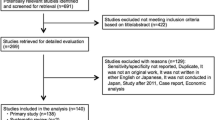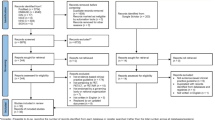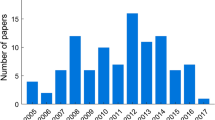Abstract.
In this study, a comprehensive, unbiassed search strategy for identifying literature on fluorine-18 fluorodeoxyglucose positron emission tomography (FDG-PET) in Medline, Embase and Current Contents was developed, with specific search strategies for each database, using MeSH terms as well as free text words for PET and FDG. To examine which text words apply to FDG, we evaluated the ways of spelling FDG in a random sample of FDG-PET articles (n=100). These words were used as free text words in the two databases and overlap was determined. PET publications were identified using the text words ”positron emission tomography” and ”pet$” combined with the respective MeSH terms for each database. To compare the yield of the combined FDG-PET strategy in each database, the retrieved citations were downloaded to Pro-Cite 4.0. Finally, we added search terms for lung cancer, breast cancer, melanoma, head and neck cancer and lymphoma to our strategy and to a short strategy (consisting of the text words ”positron emission tomography” and ”fdg”). In order to measure the yield and precision (positive predictive value, PPV) of our search strategy and compare it with the short one, we screened the title and abstract of the retrieved citations. Reviewing a random sample of the FDG-PET literature yielded 56 different ways of spelling FDG. We confined the list to 11 text words, without missing articles. Of the publications retrieved by these text words, only 4% were indexed by the MeSH term ”Fludeoxyglucose F18” in Medline and 29% by the MeSH-term ”Fluorodeoxyglucose F18” in Embase. Only 51% of PET articles were indexed by the MeSH term ”Tomography, emission-computed” in Medline and 40% by the MeSH term ”Positron emission tomography” in Embase. The combined search strategy for identifying studies on FDG and PET resulted in 2865 publications in Medline and 2646 in Embase. Medline identified 1662 publications not found by Embase; Embase identified 1422 publications not found by Medline. Compared with the short strategy, our search strategy yielded on average 52% more publications (94%, 41% and 20% more in Medline, Embase and Current Contents, respectively). The PPV of our strategy (percent of publications that were really on PET, FDG and the specified subject) was 70%, compared with 76% using the short strategy. Regardless of the strategy used, Embase yielded more publications and was also slightly more specific than Medline. With the recommended strategy, FDG-PET publications can be identified more efficiently. We have shown the importance of searching more than one database and emphasize the use of both MeSH terms and text words in a search strategy. Standardization of the spelling of FDG and indexing of articles on FDG would substantially simplify searching.
Similar content being viewed by others
Author information
Authors and Affiliations
Additional information
Received 5 July and in revised form 25 September 1999
Rights and permissions
About this article
Cite this article
Mijnhout, G., Hooft, L., van Tulder, M. et al. How to perform a comprehensive search for FDG-PET literature. Eur J Nucl Med 27, 91–97 (2000). https://doi.org/10.1007/PL00006669
Issue Date:
DOI: https://doi.org/10.1007/PL00006669




